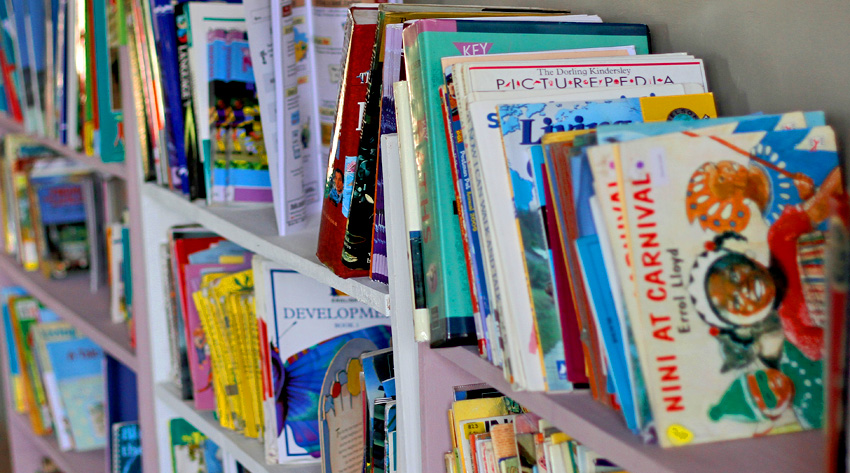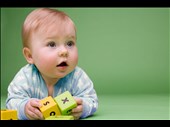Solution for: The harm that picture books can cause
Answer Table
| 1. D | 8. NOT GIVEN |
| 2. B | 9. F |
| 3. D | 10. C |
| 4. C | 11. J |
| 5. NO | 12. I |
| 6. YES | 13. C |
| 7. YES |
Exam Review
The harm that picture books can cause

A
There is a great concern in Europe and North America about declining standards of literacy in schools. In Britain, the fact that 30 per cent of 16 year olds have a reading age of 14 or less has helped to prompt massive educational changes. The development of literacy has far-reaching effects on general intellectual development and thus anything which impedes the development of literacy is a serious matter for us all. So the hunt is on for the cause of the decline in literacy. The search so far has focused on socioeconomic factors, or the effectiveness of 'traditional' versus 'modem' teaching techniques.
B
The fruitless search for the cause of the increase in illiteracy is a tragic example of the saying 'They can't see the wood for the trees'. When teachers use picture books, they are simply continuing a long-established tradition that is accepted without question. And for the past two decades, illustrations in reading primers have become increasingly detailed and obtrusive, while language has become impoverished — sometimes to the point of extinction.
C
Amazingly, there is virtually no empirical evidence to support the use of illustrations in teaching reading. On the contrary, a great deal of empirical evidence shows that pictures interfere in a damaging way with all aspects of learning to read. Despite this, from North America to the Antipodes, the first books that many school children receive are totally without text.
D
A teacher's main concern is to help young beginner readers to develop not only the ability to recognise words, but the skills necessary to understand what these words mean. Even if a child is able to read aloud fluently, he or she may not be able to understand much of it: this is called 'barking at text'. The teacher's task of improving comprehension is made harder by influences outside the classroom. But the adverse effects of such things as television, video games, or limited language experiences at home, can be offset by experiencing 'rich' language at school.
E
Instead, it is not unusual for a book of 30 or more pages to have only one sentence full of repetitive phrases. The artwork is often marvellous, but the pictures make the language redundant, and the children have no need to imagine anything when they read such books. Looking at a picture actively prevents children younger than nine from creating a mental image, and can make it difficult for older children. In order to learn how to comprehend, they need to practise making their own meaning in response to text. They need to have their innate powers of imagination trained.
F
As they grow older, many children turn aside from books without pictures, and it is a situation made more serious as our culture becomes more visual. It is hard to wean children off picture books when pictures have played a major part throughout their formative reading experiences, and when there is competition for their attention from so many other sources of entertainment. The least intelligent are most vulnerable, but tests show that even intelligent children are being affected. The response of educators has been to extend the use of pictures in books and to simplify the language, even at senior levels. The Universities of Oxford and Cambridge recently held joint conferences to discuss the noticeably rapid decline in literacy among their undergraduates.
G
Pictures are also used to help motivate children to read because they are beautiful and eye-catching. But motivation to read should be provided by listening to stories well read, where children imagine in response to the story. Then, as they start to read, they have this experience to help them understand the language. If we present pictures to save children the trouble of developing these creative skills, then I think we are making a great mistake.
H
Academic journals ranging from educational research, psychology, language learning, psycholinguistics, and so on cite experiments which demonstrate how detrimental pictures are for beginner readers. Here is a brief selection:
I
The research results of the Canadian educationalist Dale Willows were clear and consistent: pictures affected speed and accuracy and the closer the pictures were to the words, the slower and more inaccurate the child's reading became. She claims that when children come to a word they already know, then the pictures are unnecessary and distracting. If they do not know a word and look to the picture for a clue to its meaning, they may well be misled by aspects of the pictures which are not closely related to the meaning of the word they are trying to understand.
J
Jay Samuels, an American psychologist, found that poor readers given no pictures learnt significantly more words than those learning to read with books with pictures. He examined the work of other researchers who had reported problems with the use of pictures and who found that a word without a picture was superior to a word plus a picture. When children were given words and pictures, those who seemed to ignore the pictures and pointed at the words learnt more words than the children who pointed at the pictures, but they still learnt fewer words than the children who had no illustrated stimuli at all.
Questions 1-4
Choose the appropriate letters A-D and write them in boxes 1-4 on your answer sheet
1 Readers are said to 'bark' at a text when ...
A they read too loudly.
B there are too many repetitive words.
C they are discouraged from using their imagination.
D they have difficulty assessing its meaning.
Answer: D Locate
2 The text suggests that...
A pictures in books should be less detailed.
B pictures can slow down reading progress.
C picture books are best used with younger readers.
D pictures make modem books too expensive.
Answer: B Locate
3 University academics are concerned because ...
A young people are showing less interest in higher ed
B students cannot understand modem academic text
C academic books are too childish for their undergraduates
D there has been a significant change in student literacy
Answer: D Locate
4 The youngest readers will quickly develop good reading
A learn to associate the words in a text with pictures.
B are exposed to modern teaching techniques.
C are encouraged to ignore pictures in the text.
D learn the art of telling stories.
Answer: C Locate
Questions 5-8
Do the following statements agree with the information given in Reading Passage?
In boxes 5-8 on your answer sheet write
YES if the statement agrees with the information
NO if the statement contradicts the information
NOT GIVEN if there is no information about this in the passage
5 It is traditionally accepted that children's books should contain few pictures.
Answer: NO Locate
6 Teachers aim to teach both word recognition and word meaning.
Answer: YES Locate
7 Older readers are having difficulty in adjusting to texts without pictures.
Answer: YES Locate
8 Literacy has improved as a result of recent academic conferences.
Answer: NOT GIVEN
Questions 9-12
Reading Passage has ten paragraphs, A-J.
Which paragraphs state the following information?
Write the appropriate letters A-J in boxes 9-12 on your answer sheet.
NB There are more paragraphs than summaries, so you will not use them all.
9 The decline of literacy is seen in groups of differing ages and abilities.
Answer: F Locate
10 Reading methods currently in use go against research findings.
Answer: C Locate
11 Readers able to ignore pictures are claimed to make greater progress.
Answer: J Locate
12 Illustrations in books can give misleading information about word meaning.
Answer: I Locate
Questions 13
From the list below choose the most suitable title for the whole of Reading Passage.
Write the appropriate letter A-E in box 13 on your answer sheet.
A The global decline in reading levels
B Concern about recent educational developments
C The harm that picture books can cause
D Research carried out on children's literature
E An examination of modern reading styles
Answer: C
Other Tests
-
-
Total questions: 13
- 5- Matching Headings
- 5- Matching Information
- 3- Plan, map, diagram labelling
-
Total questions: 14
- 14- Multiple Choice
-
-
Total questions: 14
- 5- Multiple Choice
- 6- YES-NO-NOT GIVEN
- 3- Matching Information
-










